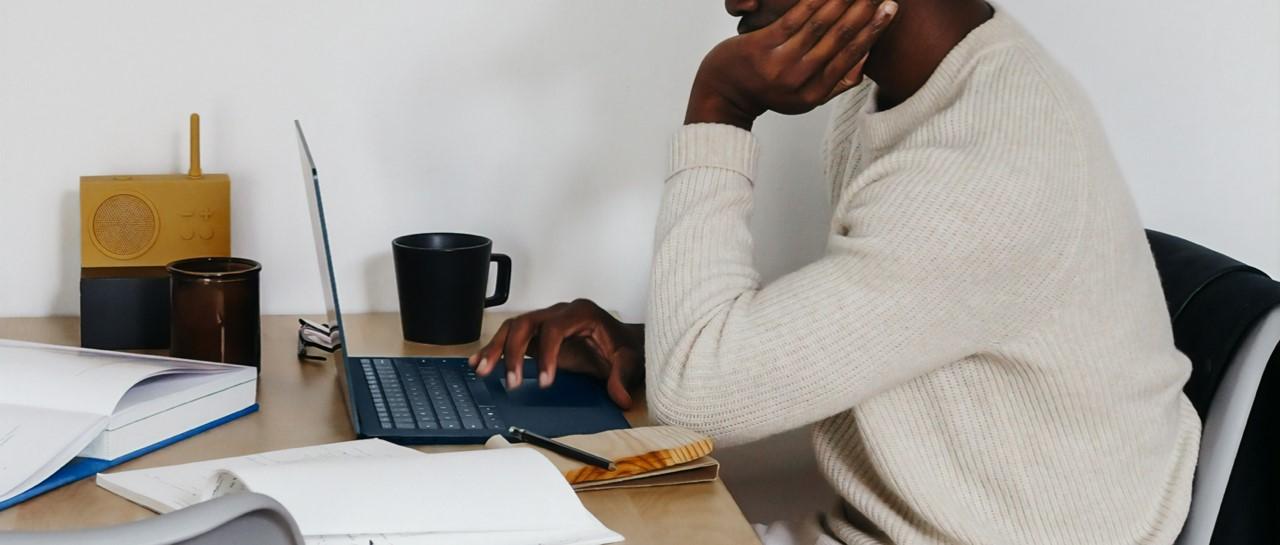
When should you worry about neck pain?
Peer reviewed by Dr Colin Tidy, MRCGPLast updated by Victoria RawLast updated 29 Jul 2025
Meets Patient’s editorial guidelines
- DownloadDownload
- Share
- Language
- Discussion
Many of us will get neck pain at some point, often walking up with a sore or aching neck. It's hardly surprising - the neck is a miracle of natural engineering. It allows us to twist our heads in all directions while still supporting the weight of our skulls and protecting the vital nerves connecting our brains with the rest of our bodies.
In this article:
Continue reading below
What causes neck pain and stiffness?
Seven bones called vertebrae are connected by spongy shock-absorbing 'discs', with a network of muscles and tough connective tissue supporting them. The spinal cord runs through a canal protected on all sides by bone. Damage or strain to any one of these can cause pain.
What are the symptoms of neck pain?
Pain which often starts in the neck and spreads to one or both shoulders - sometimes further down the arm - or up to the back of your head. Your neck and shoulders may feel stiff. Pins and needles are common and usually not a worrying sign, but these need to be checked out as they suggest a nerve emerging from your spine may be caught or irritated. The pain usually improves after a few days and goes within weeks.
Continue reading below
Do I need tests?
As long as you don't have any of the 'red flags' below you're unlikely to need tests and may not even need to see a doctor. X-rays and scans aren't recommended except in special circumstances as they don't change treatment options.
Red flags - when should you worry?
Most neck pain doesn't mean there's a serious problem to worry about.
However, you should always get your symptoms checked out if:
It's connected with numbness, weakness or persistent pins and needles in your arm.
You've had any trauma such as a whiplash injury.
You feel generally unwell, especially with weight loss or fever.
The pain keeps getting worse rather than better.
The neck bones - rather than muscles on either side - are very tender.
You also develop weakness in your legs or problems with peeing.
You have other medical problems such as a history of a recent accident, cancer or rheumatoid arthritis.
Continue reading below
How to ease neck pain
Keep moving
When you first get neck pain, it may be very painful to move and you'll need to rest in a neutral position for a couple of days. After that, as long as you don't have the 'red flags' above, it's important to keep moving your neck to stop it stiffening up - which is why neck collars or braces are not recommended unless your doctor says so.
Turn your head gently in all directions every few hours, trying to increase the range of motion gradually. Avoid prolonged sitting but keep up your normal activities as much as possible.
Medicine and self-care
Painkillers such as paracetamol or anti-inflammatory painkillers such as ibuprofen - which also comes in a gel from your pharmacist - will help. Your doctor may recommend a short course of muscle relaxants if there's a lot of muscle spasm. A heat pad or pack over aching muscles may also help.
Wry neck
A wry neck - torticollis - is when the neck gets stuck with your head twisted to one side. It may be due to strain of the muscles or ligaments of the neck, making the muscles go into spasm. Sleeping in a draught or an uncomfortable position may bring it on. It's often very painful in the muscles on one side but usually settles within a few days. In the meantime, painkillers will help.
Avoiding neck pain - dos and don'ts
You cannot always avoid neck pain, but simple day-to-day precautions can reduce your chance of getting it.
Do
Turn your chair to face your computer directly and adjust your chair so the screen is at eye level.
Stretch regularly if you're working at a desk or driving long distances.
Keep your head back over your spine rather than hunched forwards.
Consider Pilates, yoga or the Alexander technique - many councils have lists of local classes for all ages and abilities.
Do not
Sleep on your stomach. If possible, sleep on your back.
Use a very firm or high pillow - it should support the natural curve of your neck.
Tuck your phone under your chin by hunching your shoulders up.
Patient picks for Neck and shoulder

Bones, joints and muscles
How to avoid neck, shoulder and back pain while working from home
Have you found it hard to set up a comfortable workspace during the coronavirus lockdown? Started missing your standing desk or office chair whilst working from home? Our workspace can cause our muscles considerable pain if not set up properly, so we asked two experts to explain how best to do it.
by Andrea Downey

Bones, joints and muscles
How to treat neck pain triggered by moving your head
Neck pains are a real pain in the neck. I guess mine started as a student and was caused by hours poring over medical textbooks. I've had it ever since. So when I read a forum user posting about their experience with neck pain, it rang all sorts of familiar bells.
by Dr Laurence Knott
Continue reading below
Article history
The information on this page is peer reviewed by qualified clinicians.
Next review due: 30 Jul 2028
29 Jul 2025 | Latest version
31 Aug 2021 | Originally published
Authored by:
Dr Sarah Jarvis MBE, FRCGP

Ask, share, connect.
Browse discussions, ask questions, and share experiences across hundreds of health topics.

Feeling unwell?
Assess your symptoms online for free
Sign up to the Patient newsletter
Your weekly dose of clear, trustworthy health advice - written to help you feel informed, confident and in control.
By subscribing you accept our Privacy Policy. You can unsubscribe at any time. We never sell your data.